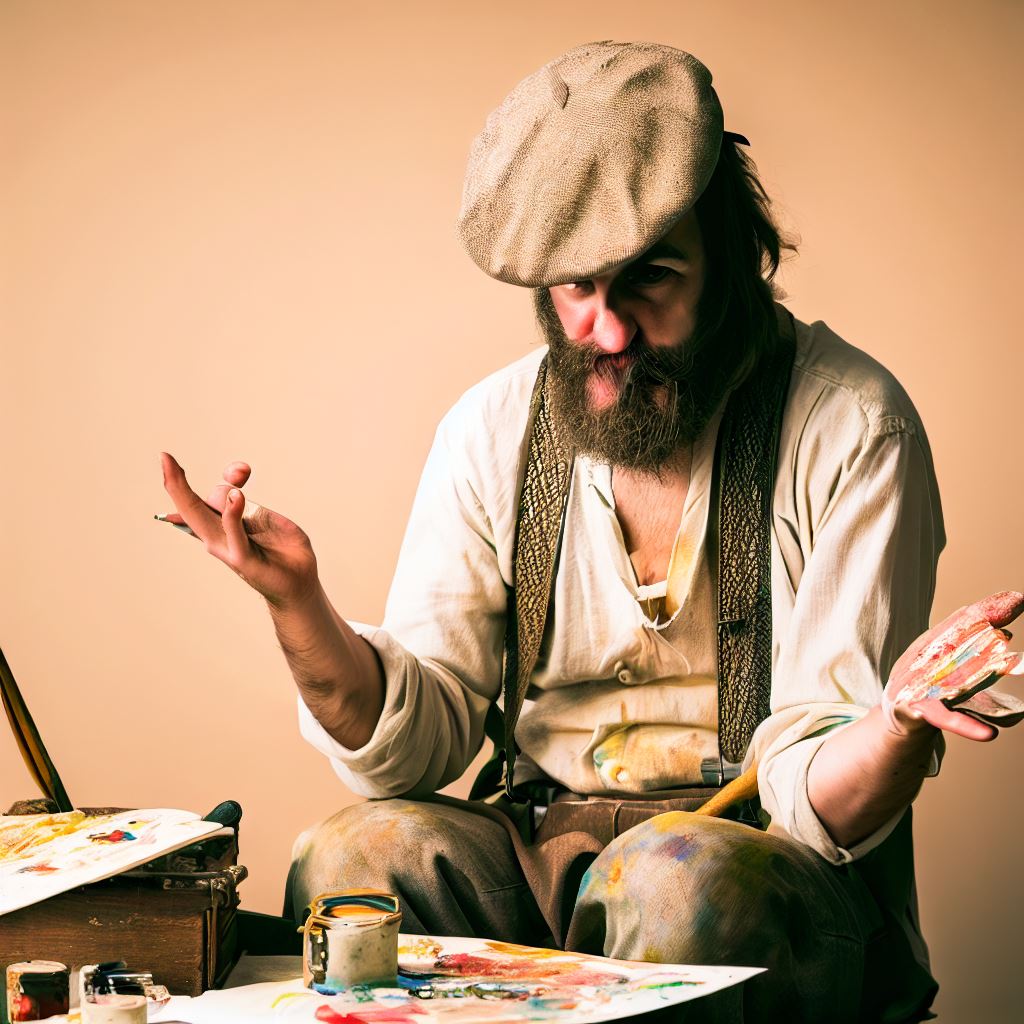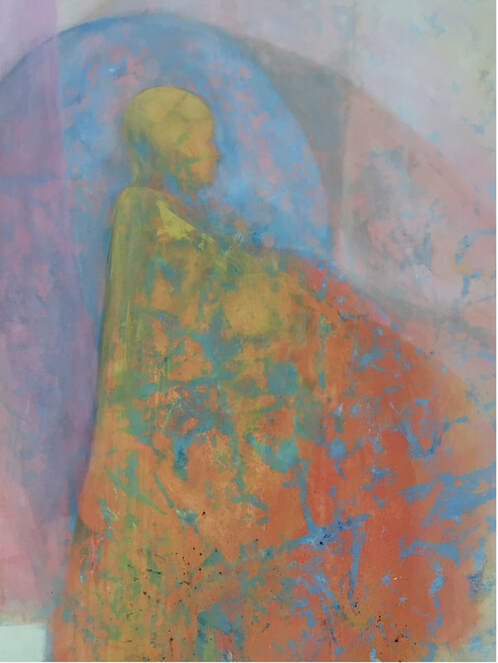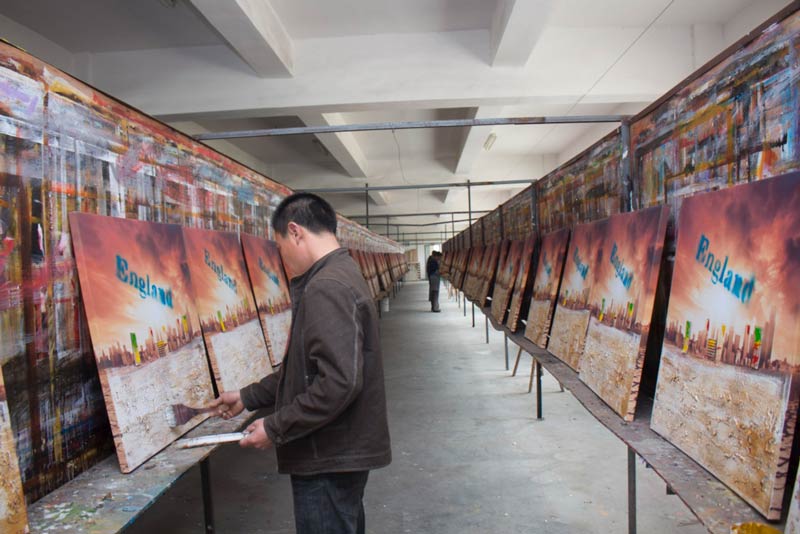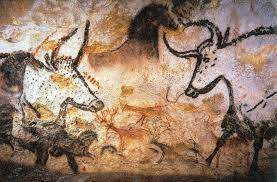 So, you want to be a famous artist! Often, we can find the path to success already carved out by those who went before so let us look at some artists who have achieved greatness and see how they did it. Comparing the biographies of the 10 most famous artists painters of the last century or two is not an easy task. They all had different lifestyles, personal relationships, and life experiences that influenced their artistic development. However, we will try to provide some general observations based on some commonly known information. Notable among these artists is that they all moved to Paris at some point in their careers. Paris was the epicenter of the art scene in the early 20th century. Pablo Picasso, Henri Matisse, Marc Chagall, and Georgia O’Keeffe all settled in Paris for several years and interacted with other influential artists and writers. Andy Warhol and Jackson Pollock visited Paris briefly but were more influenced by the American art scene in New York. Vincent van Gogh and Frida Kahlo also traveled to Paris but did not stay long. Salvador Dali and Henri Matisse were also artists who lived and worked in the French capital. Another commonality is that they all faced some challenges or difficulties in their personal lives, such as physical or mental illness, poverty, war, political oppression, or marital problems. Vincent van Gogh suffered from depression and cut off his own ear before committing suicide. Frida Kahlo had a tumultuous marriage with Diego Rivera and endured multiple health issues due to a bus accident and polio. Jackson Pollock struggled with alcoholism and died in a car crash. Andy Warhol was shot by a radical feminist and survived with serious injuries. Pablo Picasso had several affairs and divorces and was accused of mistreating his women. Salvador Dali was exiled from Spain for his political views and later became a recluse. Marc Chagall fled from Nazi persecution and lost his wife to a viral infection. Georgia O’Keeffe faced sexism and criticism for her erotic paintings and later lost her eyesight. Henri Matisse underwent several surgeries and spent his last years in a wheelchair. These hardships often influenced their artistic expression and style, as they used art as a way of coping or escaping from reality. A third similarity is that, throughout their careers, they all experimented with different styles, techniques, and media, often creating innovative and original works that challenged the conventions of the time. They were influenced by various artistic movements, such as Cubism, Fauvism, Surrealism, Abstract Expressionism, Pop Art, and Modernism, but also developed their own personal vision and languages. They used not only paint and canvas, but also collage, sculpture, photography, film, printmaking, ceramics, and cutouts to create their artworks. They explored various themes, such as nature, urban life, religion, mythology, sexuality, identity, politics, and emotions. They often combined elements from different cultures, traditions, and sources of inspiration. They created works that were both personal and universal, expressing their individual feelings and experiences as well as reflecting the social and historical context of their times. Of course, there is no easy formula for artistic success. Fame is an intangible thing, sought by many and attained by few. However, if we want to take some tips from the greats then innovative experimentation is a good place to start. A difficult upbringing, or personal life, or even a childhood illness or two is a useful addition and, if nothing else works, then move to Paris.
0 Comments
Echo of a Silent Mind is an abstract painting by Moksanada, an artist who explores the concept of ‘thin places’ in his artworks. ‘Thin places’ are places where the veil between the ordinary and the extraordinary is thin, and where one encounters the beauty and mystery of life. Moksanada uses colors, shapes, and textures to express his personal vision and experience of reality.
The painting depicts a person’s silhouette in orange and blue colors, against a background of pink, blue and purple hues. The person’s head is visible and is in a yellow color. The painting is done in a loose, impressionistic style with visible brushstrokes, creating an overall mood which is dreamy and ethereal. The painting can be interpreted in different ways, depending on the viewer’s perspective and imagination. However, one possible interpretation is that the painting represents the artist’s inner self, his silent mind, that echoes his thoughts and feelings. It is a reflection of his identity, his emotions, and his spirituality. The orange and blue colors of the silhouette suggest a contrast between warmth and coolness, passion and calmness, fire and water. The orange color also implies a sense of vitality, creativity, and courage. The blue color also conveys a sense of depth, tranquility, and wisdom. The contrast between these two colors creates a balance and harmony in the painting. The yellow color of the head indicates a source of light, energy, and joy. It also symbolizes the intellect, the rationality and the logic of the artist. The yellow color also contrasts with the other colors in the painting, making them appear more vibrant and intense. The yellow color also represents the artist’s optimism and hope for the future. The background colors of pink, blue and purple create a sense of space, atmosphere, and mood in the painting. The pink color evokes a feeling of love, romance, and tenderness. The blue color also invokes a feeling of peace, serenity, and spirituality. The purple color also suggests a sense of mystery, magic, and intuition. The background colors also reflect the artist’s emotions and states of mind. The impressionistic style of the painting shows the artist’s spontaneity and experimentation with different techniques and materials. The visible brushstrokes add a dimension of texture and movement to the painting. They also reveal the artist’s personality and expression. The dreamlike atmosphere evokes a sense of wonder and awe in the viewer. It also invites the viewer to enter the artist’s world of ‘thin places’, where reality is more than what it seems. The painting is a work of art that echoes the silent mind of the artist. Echo of a Silent Mind by Moksanada is an expression his personal vision and experience of reality. It uses colors, shapes, and textures to convey his identity, emotions, and spirituality. It also reflects his concept of ‘thin places’, where one can encounter the beauty and mystery of life. The painting is a manifestation of his inner self, his silent mind, that echoes his thoughts and feelings. Mass Produced Art Vs Original Artwork
Mass-produced art refers to artworks that are produced in larger quantities, often using various mechanical or digital reproduction techniques. These works are typically more accessible and affordable than one-of-a-kind, original pieces of art. Here are some advantages and disadvantages of mass-produced art and their effect on the art market: Advantages:
Lascaux cave is one of the most famous and impressive examples of prehistoric art in the world. Discovered on 12th of September 1940, and located in southwestern France, near the village of Montignac, the cave contains over 600 paintings of animals, humans, and abstract symbols that date back to around 17,000 years ago. The paintings are remarkable for their realism, detail, and variety, as well as their use of perspective, shading, and color. They reveal the artistic skills and imagination of the ancient people who created them, and their knowledge and appreciation of the natural world. But why did they paint these images? What was the purpose and meaning of their art? These questions have long fascinated and puzzled researchers and visitors. There is no definitive answer, but some possible explanations include:
Similarities:
Art is important because it connects us to ourselves, to each other, and to the world. It allows us to express ourselves in ways that words cannot. It helps us to understand ourselves and others better. It enriches our lives with beauty and meaning. It challenges us to think critically and creatively. It empowers us to change ourselves and our society. Lascaux cave is a testament to the power of art. It is a reminder that art is not a luxury or a hobby, but a necessity and a right for all human beings. It is a treasure that belongs to all humanity and that we must preserve and protect for future generations. |
Details
about bloomWe are a European/Lebanese run art space in Valencia, Spain. Archives
July 2024
COPYRIGHT NOTICE© Bloom Gallery. Unauthorized use and/or duplication of this material without express and written permission from this site’s author and/or owner is strictly prohibited. Small excerpts and links may be used, provided that full and clear credit is given to Bloom Gallery with appropriate and specific direction to the original content.
|


